Categories
- animatronics (12)
- apple (11)
- arduino (179)
- art (41)
- articles (121)
- artificial intelligence (11)
- automation (421)
- avr (205)
- bitcoin (3)
- breadboard (9)
- cameras (57)
- cars (26)
- cell phones (28)
- clothing mods (21)
- console mods (26)
- dangerous (94)
- desktop mods (24)
- embedded (5)
- flying things (54)
- fpga (22)
- gaming creations (108)
- interface (225)
- internet (17)
- laptop mods (6)
- lasers (22)
- linux (7)
- magnetic (3)
- medical (12)
- microcontrollers (51)
- misc projects (152)
- msp (12)
- music (124)
- pic (90)
- projects (23)
- pyroedu (76)
- raspberry pi (26)
- robots (312)
- security (36)
- sensors (307)
- software (200)
- solar (19)
- stamp (9)
- tools (149)
- tutorials (98)
- Uncategorized (45)
- usb (44)
- wireless (256)
Sponsors


Posted September 17, 2013 by Chris
“I’ve made plenty of LED Throwies in my day but I only recently discovered Karl Lunt’s low power LED firefly project. I was immediately inspired to make my own LEDfireflies. Unlike LED Throwies which will only last 4 or 5 days per battery, these LEDfireflies utilize ATTiny AVR microcontrollers and the LED as a light sensor (cool!) to get several weeks of flashing on a single battery.”

Posted September 15, 2013 by Chris
“The clap sensor is a simple circuit that incorporates a PC microphone, a microcontroller, and an output.I chose the ATtiny84 microcontroller for this project because I’m familiar with the AVR architecture and I have access to the tools to use it. I bought the ATtiny84 in its SOIC-14 packaging. ”
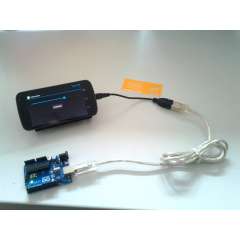
Posted September 6, 2013 by Chris
“In this post we’ll put everything together and show you how to communicate between your Android application and the Arduino using nothing but the Android USB host API. Remember, this approach has nothing to do with Android ADK! Unlike Android ADK, your Android device will act as the USB host, while your Arduino board will act as the USB device.”
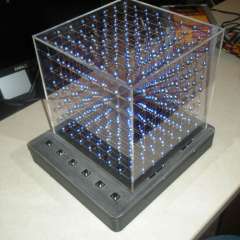
Posted September 1, 2013 by Chris
“A collection of the final projects from EGGN 482 at the Colorado School of Mines. Each project has a summary with slides and a video demonstrating how it works. Many great projects in this line-up!”

Posted August 9, 2013 by Chris
“The FabISP is an in-system programmer for AVR microcontrollers, designed for production within a FabLab. That is, it allows you to program the microcontrollers on other boards you make, using nothing but a USB cable and 6-pin IDC to 6-pin IDC cable. It’s based on the USBtiny and V-USB firmwares, which allow the ATtiny44 to perform USB communication in software.”

Posted August 8, 2013 by Chris
“A while back, I did a wireless temperature sensor project using XBee radios….So I decided to try the same project using inexpensive RF devices. I used a 434MHz transmitter ($4) and receiver ($5) from Sparkfun, and had great success with these cheap devices. I also used a simple LM34 Fahrenheit temperature sensor, two Arduinos, and a two-digit LED display to show the temperature at the receiver end.”
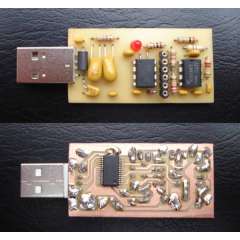
Posted August 6, 2013 by Chris
“This ain’t yet another ultimate, ultrafast and all-too-miniaturized USB-gadget. It is the ‘official’ USB-version of the XR232-TRNG, taking advantage from the benefits of USB, but retaining fundamental XR232-philosophy of independency, security, transparency and compatibility.”
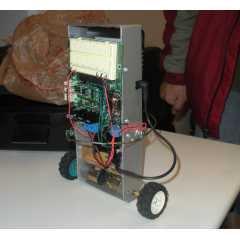
Posted July 31, 2013 by Chris
“EGGN 482: Microprocessor and microcontroller architecture focusing on hardware structures and elementary machine and assembly language programming skills essential for use of microprocessors in data acquisition, control, and instrumentation systems. Analog and digital signal conditioning, communication, and processing. A/D and D/A converters for microprocessors. RS232 and other communication standards.”
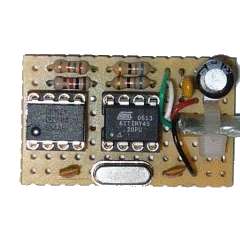
Posted July 24, 2013 by Chris
“The i2c-tiny-usb project is an open source/open hardware project. The goal of i2c-tiny-usb is to provide a cheap generic i2c interface to be attached to the usb. It is meant as a replacement for those simple and cheap printer port to i2c adapters. A USB solution has several advantages incl. the built-in power supply and a more future proof interface.”

Posted July 16, 2013 by Chris
“My wife recently asked me if I can make a digital clock from all the microcontrollers and electronic parts I’ve been playing with. She wanted to teach our son how to read the clock, and so she goes, ‘if you can make something useful out of your hobby, I’ll be pretty impressed’. :-O them challenging words..”






